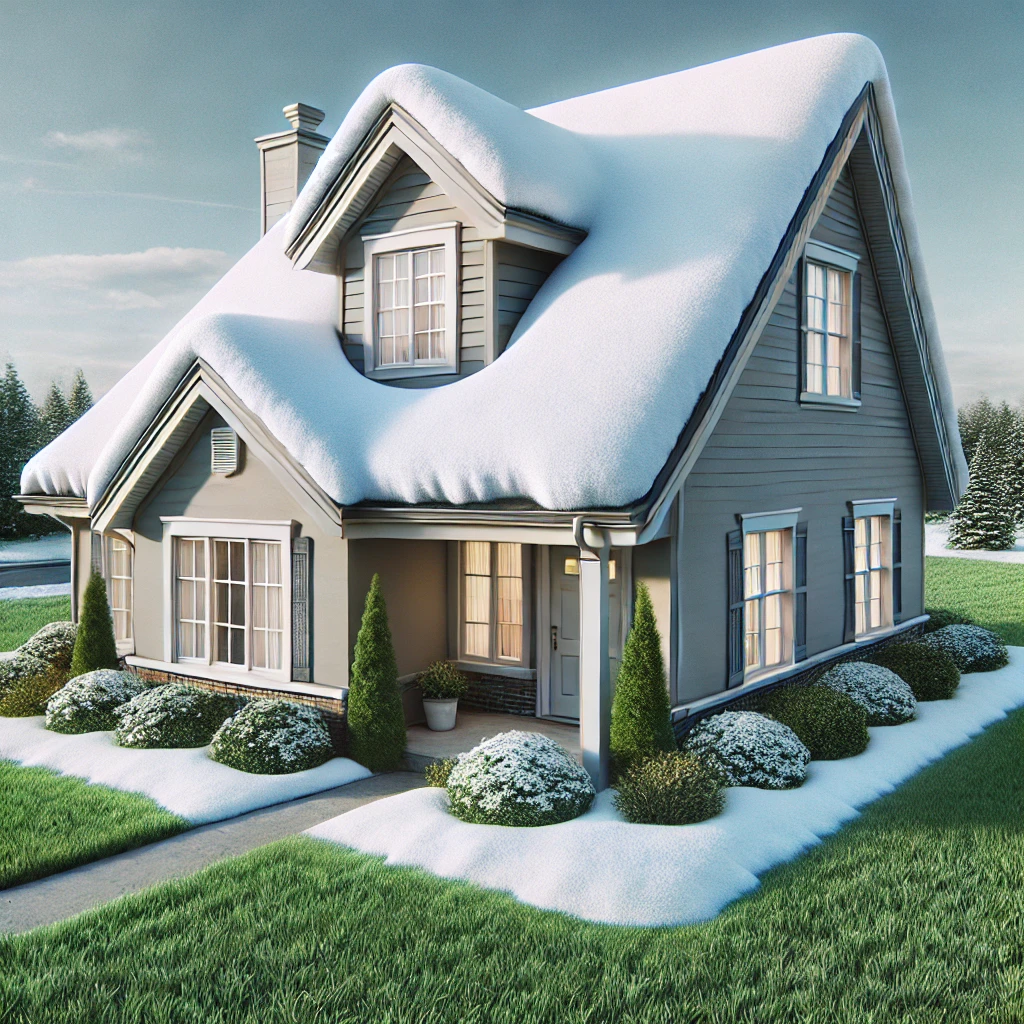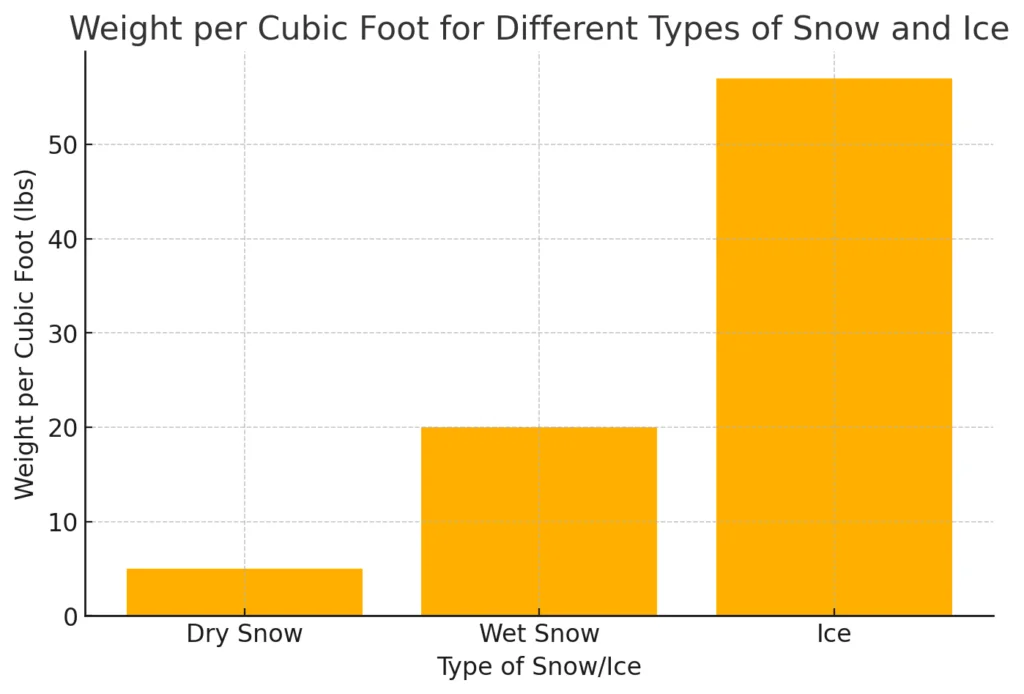Have you ever considered how snow and ice can impact your roof? As a homeowner in South Jersey, knowing the impact of snow and ice is a critical thing. The other side of the coin is “roof load capacity,” or the maximum weight your roof can safely support. Snow accumulation, ice buildup, and even heavy rain during cold months can all contribute to increased weight on your roof. Failing to account for this can lead to serious structural issues, including roof collapse. Here’s what you need to know about roof load capacity and how to protect your home during the winter.
Key Takeaways
- Roof load capacity is the total weight your roof can support, including snow, ice, rain, and roofing materials. Knowing your roof’s capacity is key to avoiding winter damage.
- Roof pitch, strength, and material type affect how much weight your roof can handle. Steeper roofs shed snow better, while flat roofs may accumulate more.
- Heavy snow and ice dams add significant weight, risking sagging, leaks, or collapse. Proper insulation and ventilation help prevent ice dams.
- South Jersey codes set minimum load standards, but older homes might not comply. Regular inspections ensure your roof meets safety requirements.
| Factor | Description |
|---|---|
| Roof Design | The pitch and structural strength impact how much weight a roof can handle. Steeper roofs shed snow better, while flat roofs may retain more snow. |
| Roofing Materials | Heavier materials reduce the additional load a roof can safely carry. Material choice influences overall load capacity. |
| Snow and Ice Accumulation | Wet, heavy snow and ice dams increase the load significantly, risking sagging, leaks, or collapse. |
| Building Codes and Standards | Local codes set minimum load standards, but older homes may not comply, requiring inspections to ensure safety. |

What is Roof Load Capacity?
What is Roof Load Capacity?
Let’s first discuss roof load capacity. The term refers to the total weight that a roof can bear without compromising its structural integrity. This includes the weight of the roofing materials, any equipment on the roof (like HVAC units), and the weight of snow, ice, or rainwater. Roof load capacity is determined by several factors, including the design of the roof, the materials used, and the local building codes.
In South Jersey, where winters can bring heavy snowfall and freezing rain, understanding your roof’s load capacity is essential to prevent damage. A roof that is not designed to handle the additional weight of snow and ice may suffer from sagging, leaks, or even catastrophic failure.
Why Roof Load Capacity Matters in South Jersey
South Jersey may not have gotten a lot of snow recently, but that doesn’t mean winter weather is a walk in the park. No, it means that there are fluctuating temperatures, interrupted freeze-thaw cycles, and loads of moisture. The problem there is that your roof could be negatively impacted, and you may not see the signs right away. This is especially true if there is extra debris trapped in the valleys or along the gutters.
Furthermore, if it does snow, you need to know if your roof can handle the weight. A roof that can’t handle the weight of accumulated snow or ice not only risks structural damage but also poses safety hazards for the occupants.
Factors Affecting Roof Load Capacity
Having learned about about roof load capacity and why it is important, let’s discuss the factors impacting how much weight a roof can handle.
Roof Design
The pitch of the roof affects how snow and ice accumulate. Steeper roofs tend to shed snow more easily, reducing the load, while flat or low-sloped roofs may retain more snow, increasing the load. The strength of the rafters, trusses, and beams plays a significant role in load capacity. Older homes or those with poor construction may have weaker support structures that are more vulnerable to winter conditions.
Roofing Materials
The type and weight of roofing materials (e.g., asphalt shingles, metal, tile) can influence the roof’s overall load capacity. Heavier materials may reduce the additional load the roof can safely carry.
Snow and Ice Accumulation
Wet, heavy snow places more stress on a roof than dry, powdery snow. For example, a cubic foot of wet snow can weigh up to 20 pounds, while the same volume of dry snow might weigh only 5 pounds.
The other thing to consider is an ice dam. Ice dams, which form when melting snow refreezes at the roof’s edge, can add significant weight and also lead to water backup under shingles, causing leaks.
Building Codes and Standards
Local building codes in South Jersey set minimum standards for roof load capacity, taking into account the region’s typical snow and ice conditions. Homes built before these codes were established or updated may not meet current standards.

Weight Per Cubic Foot For Different Types Of Snow
How to Protect Your Roof in Winter
Regardless of the state of the roof on your home, knowing how to care for it will help you extend its lifespan and keep it safe throughout the year.
Regular Inspections
Before winter sets in, have a professional inspect your roof to identify any weaknesses in the structure or areas where snow and ice are likely to accumulate.
Snow Removal
Safely removing snow from your roof can help reduce the load. Roof rakes or hiring professionals are effective ways to clear snow without damaging shingles or gutters. If you do not feel confident with removing snow from the roof yourself, consider calling in a snow removal team.
Preventing Ice Dams
Insulate your attic properly and ensure good ventilation to prevent the formation of ice dams. This helps keep the roof surface temperature consistent, reducing the chances of snow melting and refreezing. Prior to winter, you can call on a roofing contractor in South Jersey to inspect your attic. If necessary, they can also install new insulation.
Reinforcement
Consider reinforcing your roof structure if it’s older or shows signs of stress. This may involve adding additional support to rafters or installing snow guards. Again, signs of aging and wear will be visible to the trained eyes of a professional roofer. Have someone from RGB Construction come by to inspect the quality of your roof if you are worried about the soundness of the structure.
Looking for a Roofing Contractor in South Jersey?
Understanding and managing your roof’s load capacity is crucial for winter safety in South Jersey. At RGB Construction, we offer comprehensive roofing services, including inspections, repairs, and reinforcements, to ensure your roof can withstand the winter months. If you’re concerned about your roof’s ability to handle snow and ice, contact us today at 856-264-9093 or fill out our online contact form. Let us help you protect your home from winter’s challenges.







